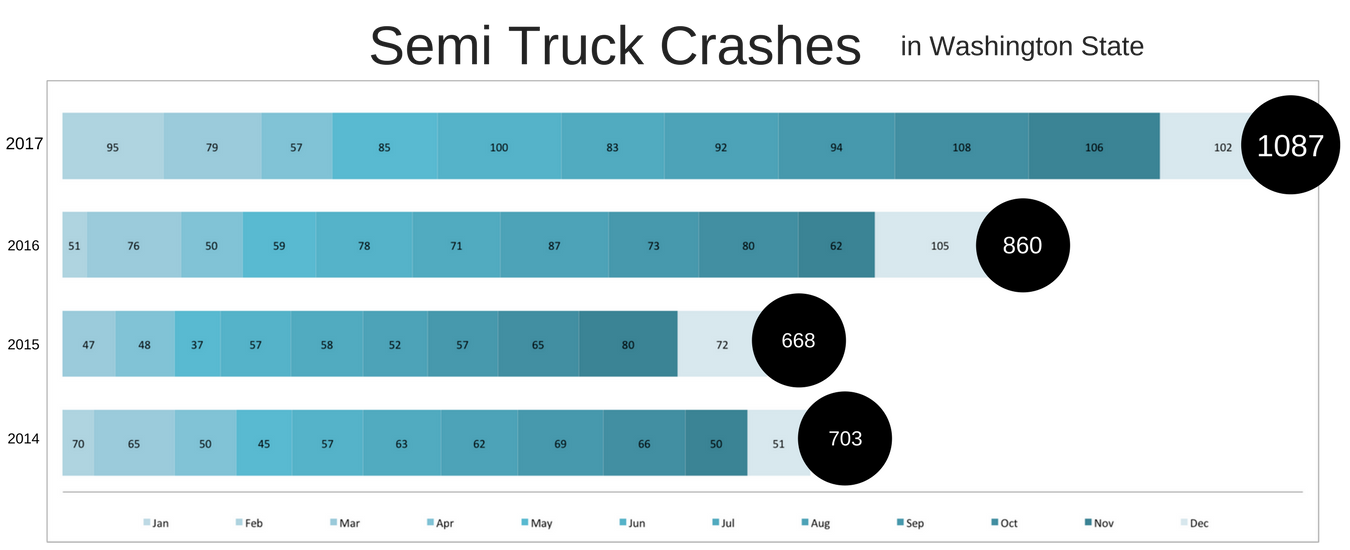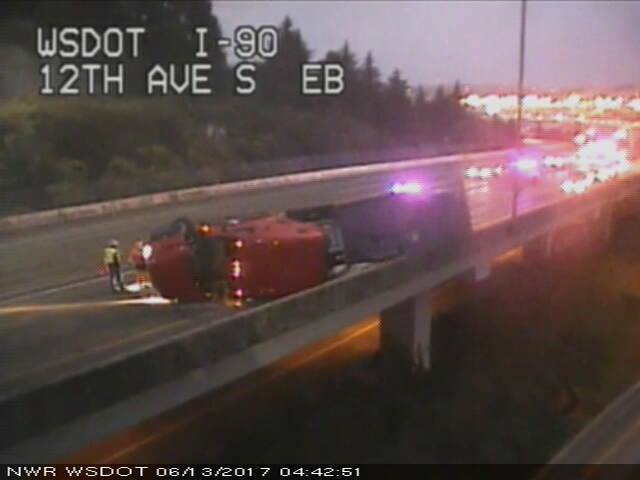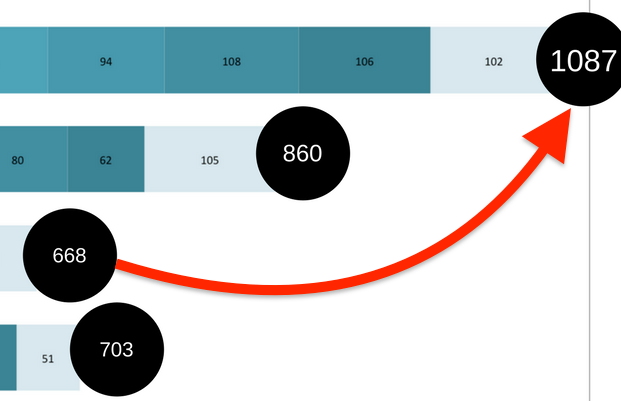Have you wondered if there have been more semi-truck crashes than usual in Washington State?
In 2017, after a spate of high-profile semi crashes in Washington that resulted in serious injuries and/or closed major highways for hours, we looked into this question.
The Washington State Patrol’s Collision Analysis Tool shows 1087 semi crashes met the damage threshold for reporting in 2017.

That’s up from 860 in 2016; an increase of nearly 27%.
It’s a 62% increase from the 668 semi-truck crashes reported in 2015.
What caused this jump in semi crashes in Washington?
There are a few reasonable options, some suggested by our Trucking Watchdog readers. But we have no definitive answers (and we are open to your suggestions about it.)
Weather
When we looked at the jump in semi-truck crashes last June, I posited that the weather may have something to do with the uptick.
But, the number of crashes didn’t really diminish during the dry, day-light filled summer months.
And the overall crash total—cars, bikes, motorcycles, etc.—actually went down.
So, the weather can’t be the only factor.
More Vehicles Miles Traveled
Vehicle miles traveled (VMT): the total miles of vehicle travel by year, divided by the total population in that area.
If the VMT in Washington State went up by a comparable percentage in 2017, then the rise in truck crashes might make sense.

We don’t have 2017 data yet. But, the average national VMT is estimated to go up about 1% per year.
That’s just an estimate, and it’s national— but you can see that it’s a comparatively minor increase next to the 26% jump in semi-truck crashes.
Economic growth
We are by no means economic experts who can give a full explanation of economic impacts on trucking (and if you are, we’d like to hear from you).
Washington State’s economy grew a lot in 2016—about 3.7% over 2015.
If that growth held over 2017, is it possible that the increased spending, manufacturing, shipping, etc., contributed to semi-truck traffic—and crashes?
Would it be enough to explain why there were 25% more semi-truck crashes last year?
Or the 62% increase in semi crashes from 2015 to 2017?
Trucking Industry
We’ve had a few truckers send emails on this topic, and comment on previous posts.
“I can tell you exactly why there is an uptick in truck crashes,
first and foremost it’s dispatchers and management
running employees at all hours of the day”
They talk about how trucking companies put them in danger, with too many stops to complete in a 14-hour shift.
Or truckers being forced to drive when they’re dangerously tired.
Or poorly planning routes that leave truckers stuck in traffic and making up for lost time.
How many of the 1087 semi crashes in Washington last year could have been prevented?

A trucking company shared this terrible advice to truckers on their Facebook page.
“DON’T STOP WHEN YOU ARE TIRED. STOP WHEN YOU ARE DONE!”
Why Safe Truckers are No Accident

Leave A Comment